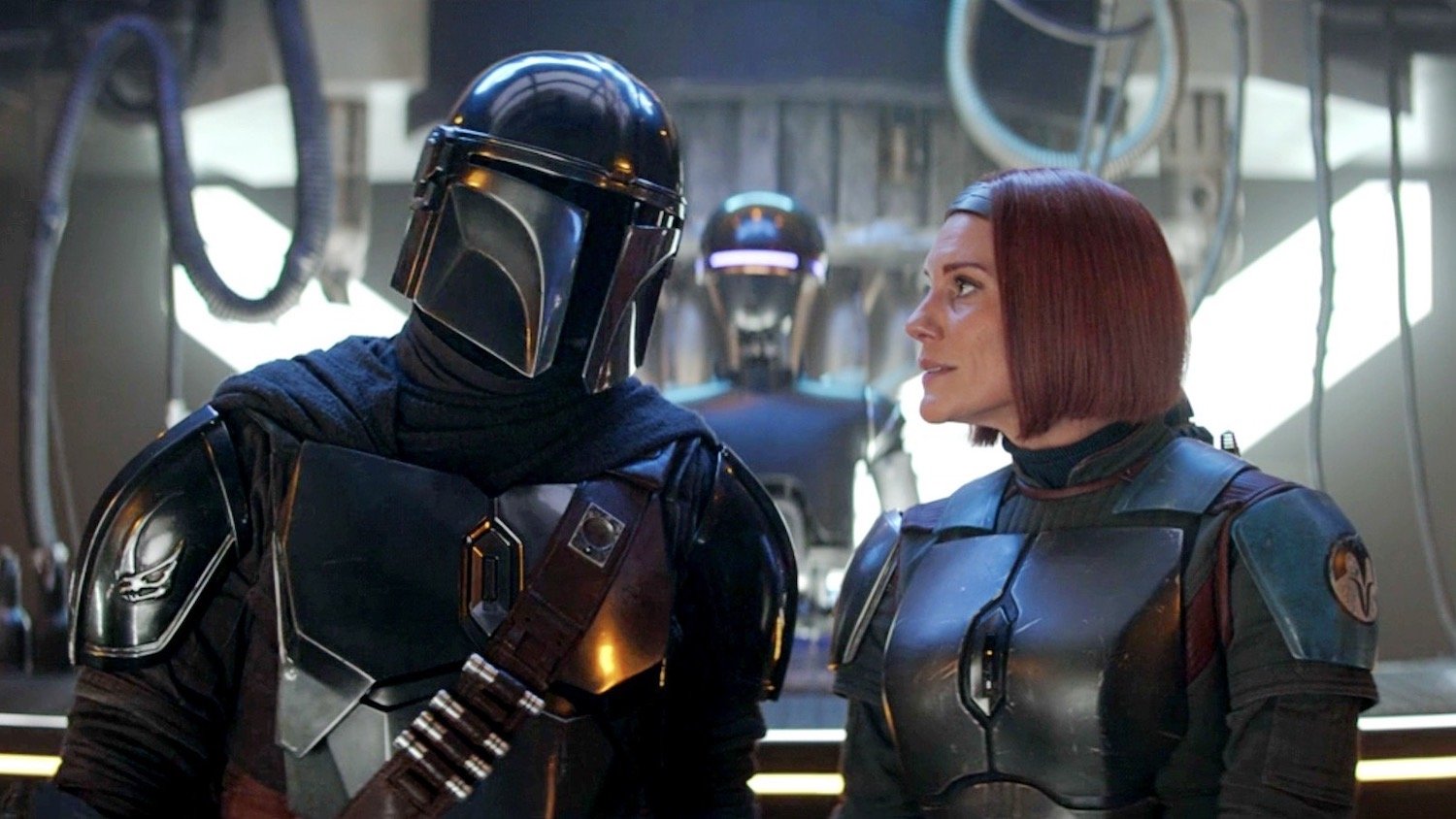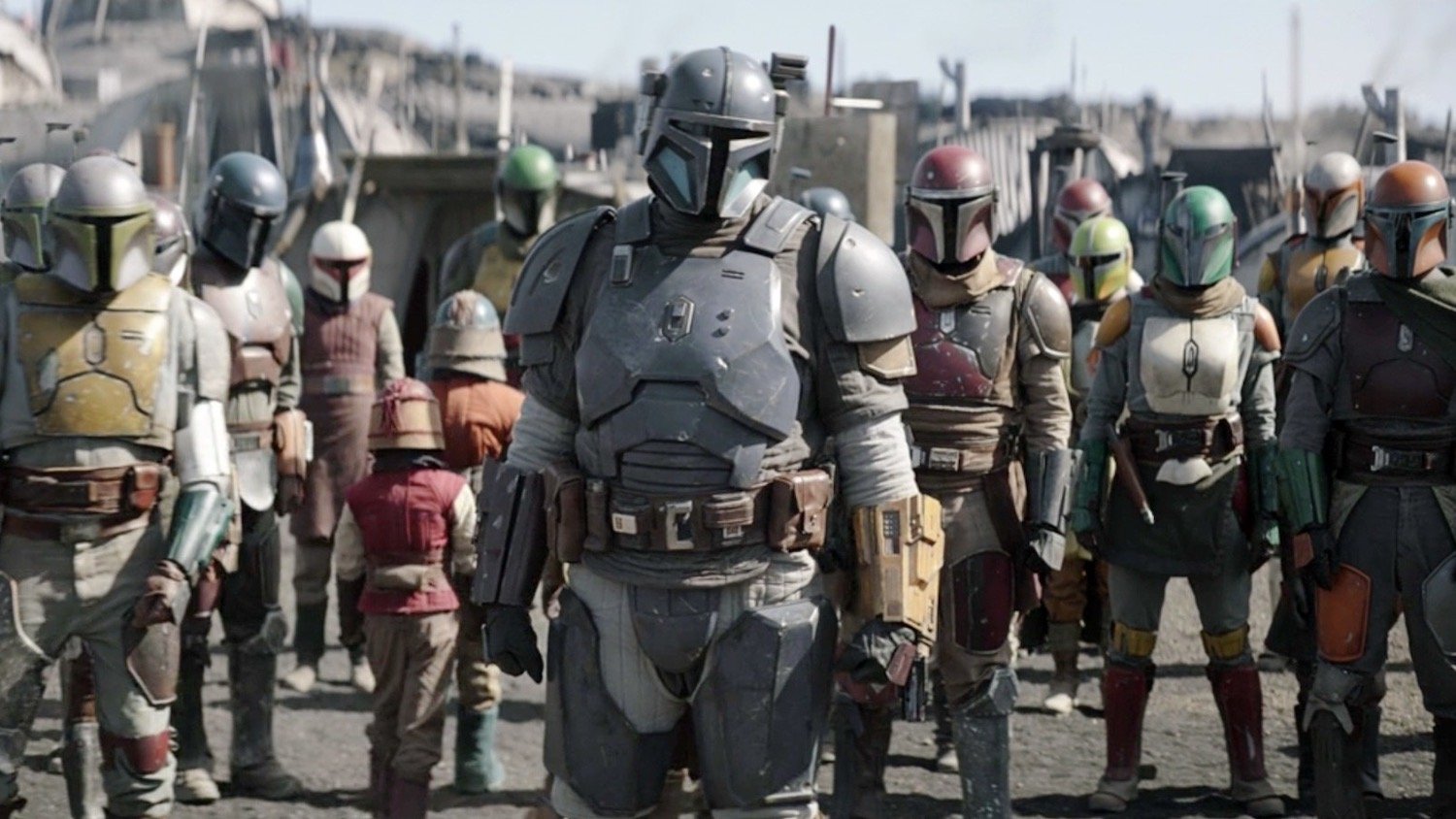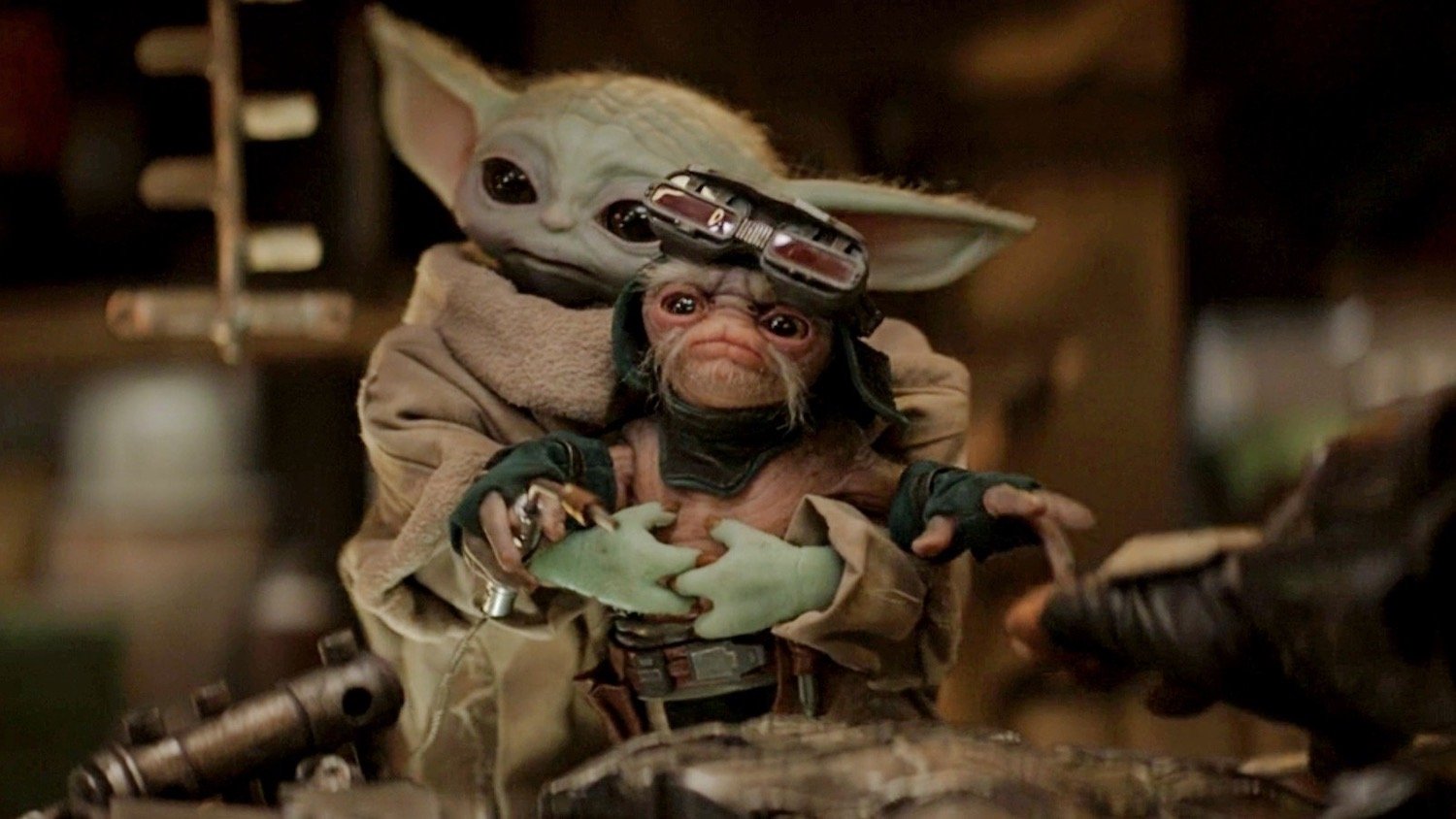I watched all eight episodes of The Mandalorian season 3, but I have to admit, my interest in this show has waned. At this point, it’s more for my job that I’ve been keeping up with it. (Two of the eight episodes were advance digital screeners, sent for the purposes of /Film coverage.)
Don’t get me wrong: there are worse ways to spend your workday (or Star Wars Day 2023) than writing about Star Wars TV, and I still managed to summon up 1,500+ words on R5-D4, the galaxy’s most sympathetic droid. But if the aim of The Mandalorian is to be like a Saturday afternoon serial of the kind that inspired the young George Lucas, it feels less like a matinee and more like something syndicated, cheap and televisual.
From flagship to floundering
The Mandalorian started out as the flagship Disney+ show. It was the first original series to debut when the streaming service launched in November 2019. Ludwig Göransson's score lent the first two seasons an “event TV” quality, but while you’ll still hear some of the musical themes he established for the show, Göransson has been replaced by Joseph Shirley in season 3. Meanwhile, we’re spending more time with series protagonist Din Djarin among other Mandalorians galore, which leads to scenes where characters in helmets stand around talking without a human face in sight.
I would never accuse Pedro Pascal of phoning it in, but since he’s just voicing Din Djarin most of the time, he could conceivably do that from the set of HBO’s The Last of Us, and no one would notice. Katee Sackhoff’s increased role as Bo-Katan, who is able to remove her helmet more, gives the viewer at least one face to latch onto, but in the same way that The Book of Boba Fett turned into The Mandalorian season 2.5, it almost feels like they should rename The Mandalorian season 3 “Bo and Mando.”
Speaking of digressions, for me, the most interesting part of The Mandalorian season 3 was when it cut away from the main storyline to check back in on Dr. Pershing (Omid Abtahi) and Elia Kane (Katy M. O'Brian), two former Imperial officers granted pardons by the New Republic. Their scenes on the ecumenopolis, or planet-wide city, of Coruscant reminded me of the juicy intrigue of Andor. Yet as The Mandalorian flounders in episodic adventures and clunky dialogue like, "I have bathed in the living waters beneath the mines of Mandalore," it can only suffer in comparison to Andor.
Creatures and droids and helmets, oh my
The Mandalorian season 2 seemed to put Baby Yoda (or The Child or Grogu or Din Grogu, or whatever he’s calling himself these days) to rest, but The Book of Boba Fett reset the status quo for him and Din Djarin. Now, The Mandalorian season 3 has him scampering around with the likes of Babu Frik from The Rise of Skywalker. Some fans may delight in small creatures, droids, and helmets as right and proper Star Wars trappings, but The Mandalorian season 3 drowns in them so much that it comes at the expense of any relatable or compelling human narrative.
Giancarlo Esposito lays the villainy on a bit thick as Moff Gideon, while the ongoing cavalcade of comedic guest stars (most notably, Jack Black this season) proves distracting. The real turning point for me, I think, with The Mandalorian came in the season 2 finale when the show brought in a digitally de-aged Luke ex machina to wrap things up. “Let the past live,” it seemed to say, and, “Deepfake it till you make it,” but I’d rather see more of the human side of Star Wars and less of the kiddie stuff or the nostalgia for “old friends long gone,” as Yoda would say.
This is purely a matter of taste coming from a grown-ass man who gets paid to write about Star Wars and other such things. Your mileage may vary, and you may not even measure it by miles since we’re talking about a galaxy where distance is sometimes measured in parsecs. For me, it doesn’t change the thought, “I’ve got a bad feeling about this,” when it comes to The Mandalorian, a once-prestige TV show that’s become something of a chore to watch. What began life as the flagship Disney+ series is now a space oddity with little in the way of humanity or a narrative raison d’être.


